CURATORIAL PROJECTS
PERDIDOS E ACHADOS /EXPOSIÇÃO
"Todo e qualquer material, inclusive lixo industrial e os resíduos do consumo, podem ser trabalhados esteticamente", assegurava o curador e crítico de arte Frederico Morais no início dos anos 1970 em relação aos Domingos de Criação por ele implementados no MAM-RJ. Apesar de já naquela época podermos identificar um interesse por materiais precários, baratos e reutilizáveis por parte de artistas e curadores - também presente através do movimento italiano de arte povera ("arte pobre") -, não deixa de ser instigante que na última década jovens artistas se tenham reapropriado de tal abordagem.
É a partir desta realização que Perdidos e Achados convida Manuela Costa Lima, Clarice Cunha, Andréa Hygino, Juliana Maia, Leka Mendes e Carlos Monaretta de forma a conceber um encontro entre obras feitas a partir deste princípios. Muitos dos trabalhos partem de materiais encontrados em deambulações pelas ruas das cidades que este conjunto de artistas habita e das relações profundas que desenvolvem, através das suas práticas, com estes contextos. Lhes é comum uma aproximação à materialidade a partir de um reconhecimento das marcas afetivas e das camadas de tempo que estes carregam. Entendo-os como arquivo bruto, os objetos, tal qual foram achados, tornam-se ponto de partida para fabulações que investigam e questionam a nossa relação com o mundo.
A exposição teve lugar no Bananal entre os dias 29 de Agosto e 27 de Setembro de 2025.
No âmbito da programação pública organizaram-se uma visita guiada com a curadora, uma conversa com as artistas Leka Mendes, Manuela Costa Lima e Clarice Cunha, e uma roda de conversa intitutlada "Instituições Porosas" com a participação de Raphael Escobar, Bruno O. (JAMAC), Clarissa Ximenes (Bananal), Carmen Silva (MSTC e Cozinha Ocupação 9 de Julho), Todd Lester (Lanchonete.org) e Marcela Amaral (Casa do Povo).
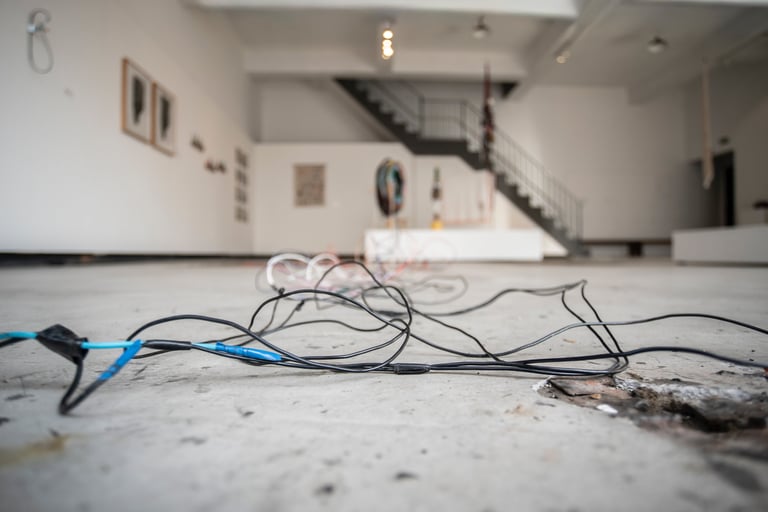

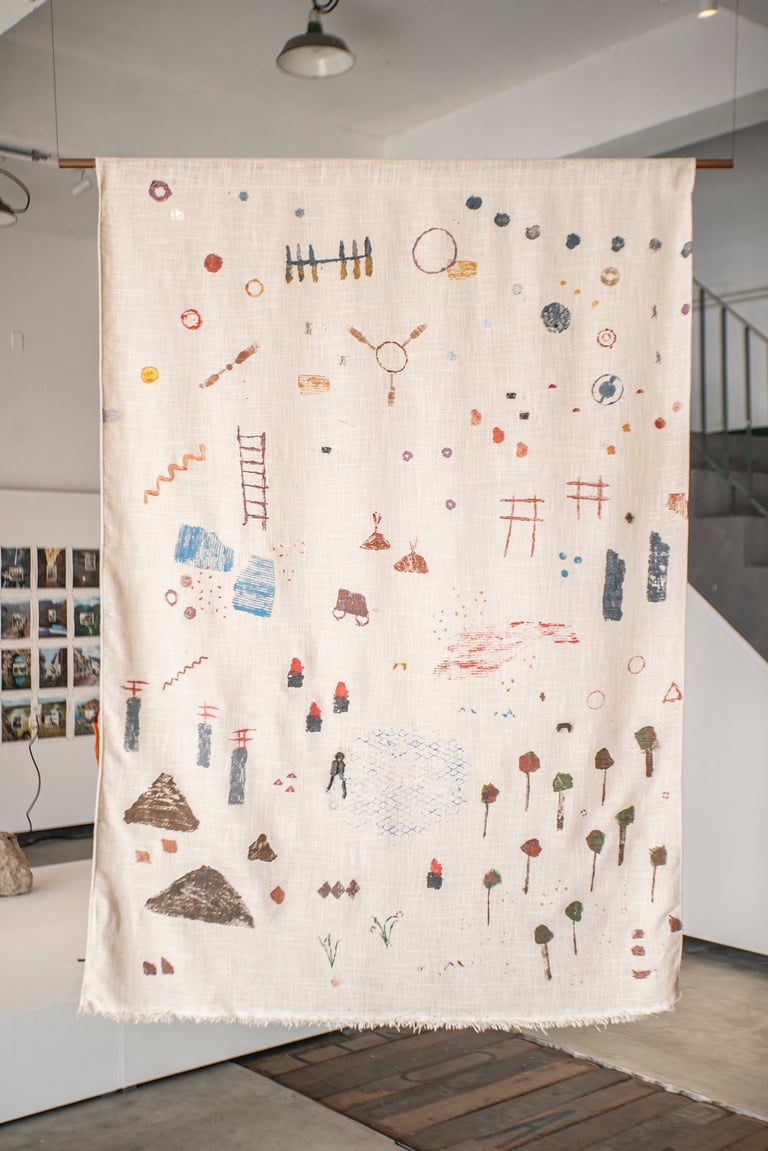

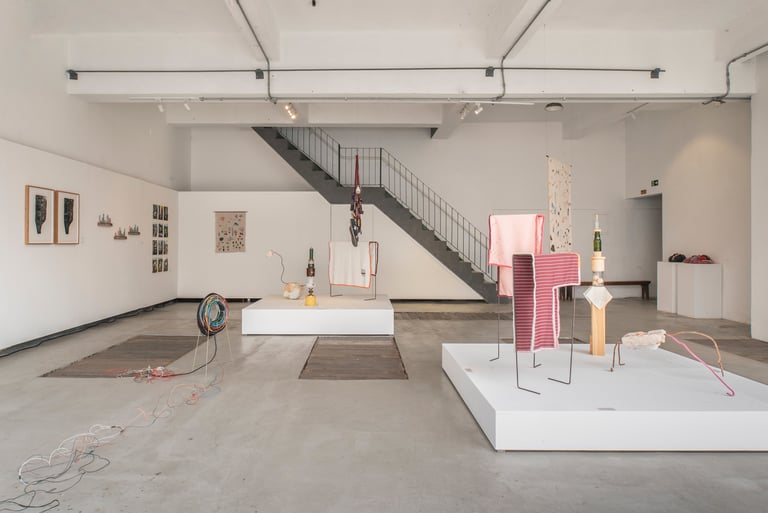

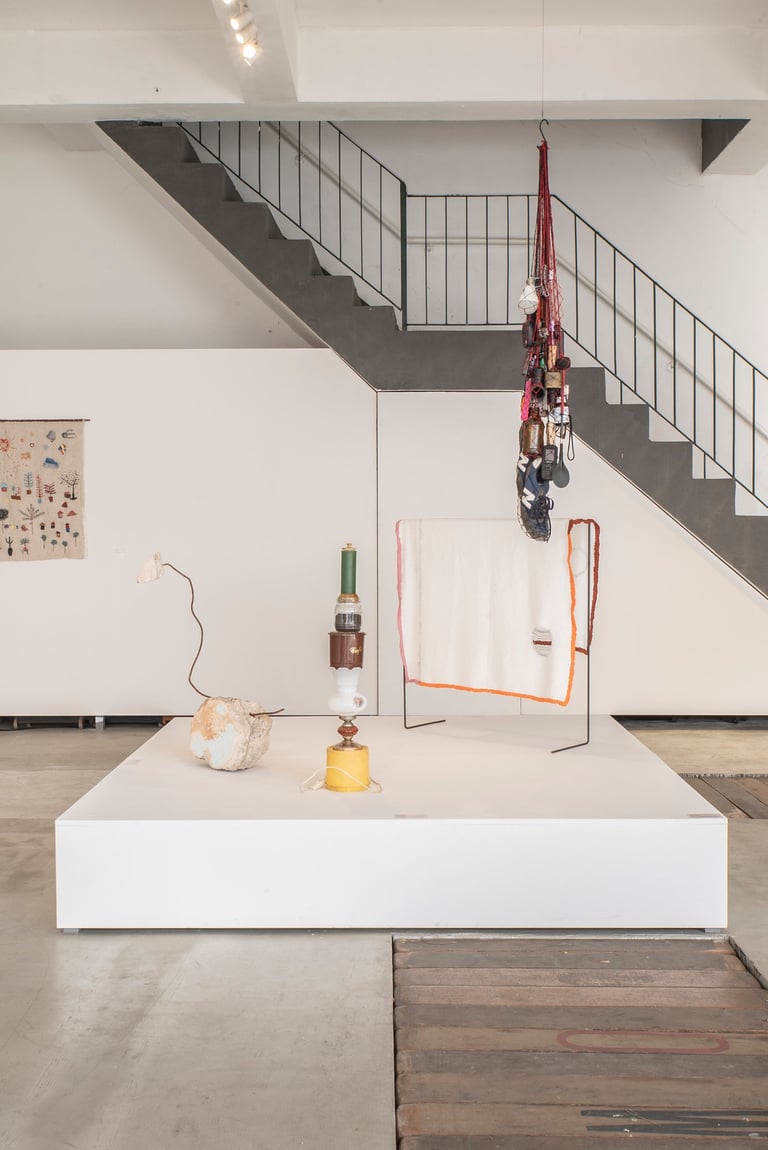

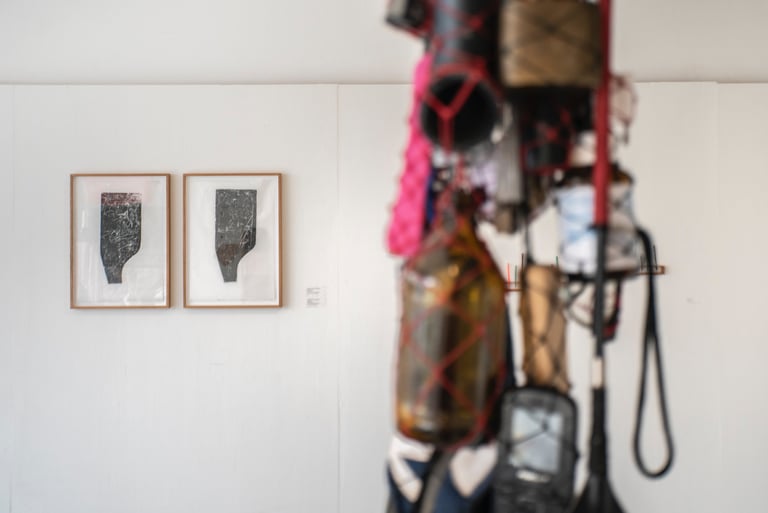

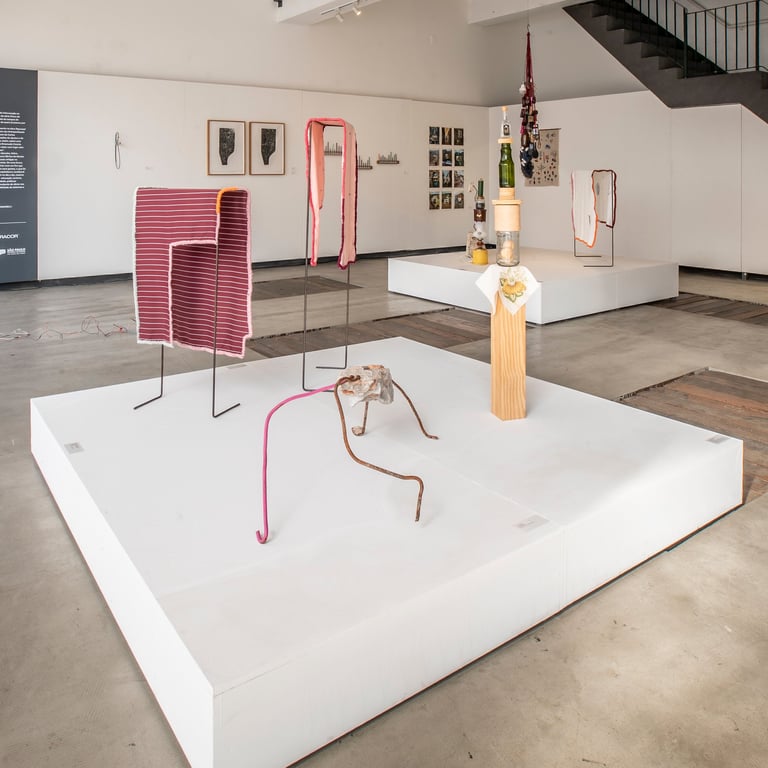

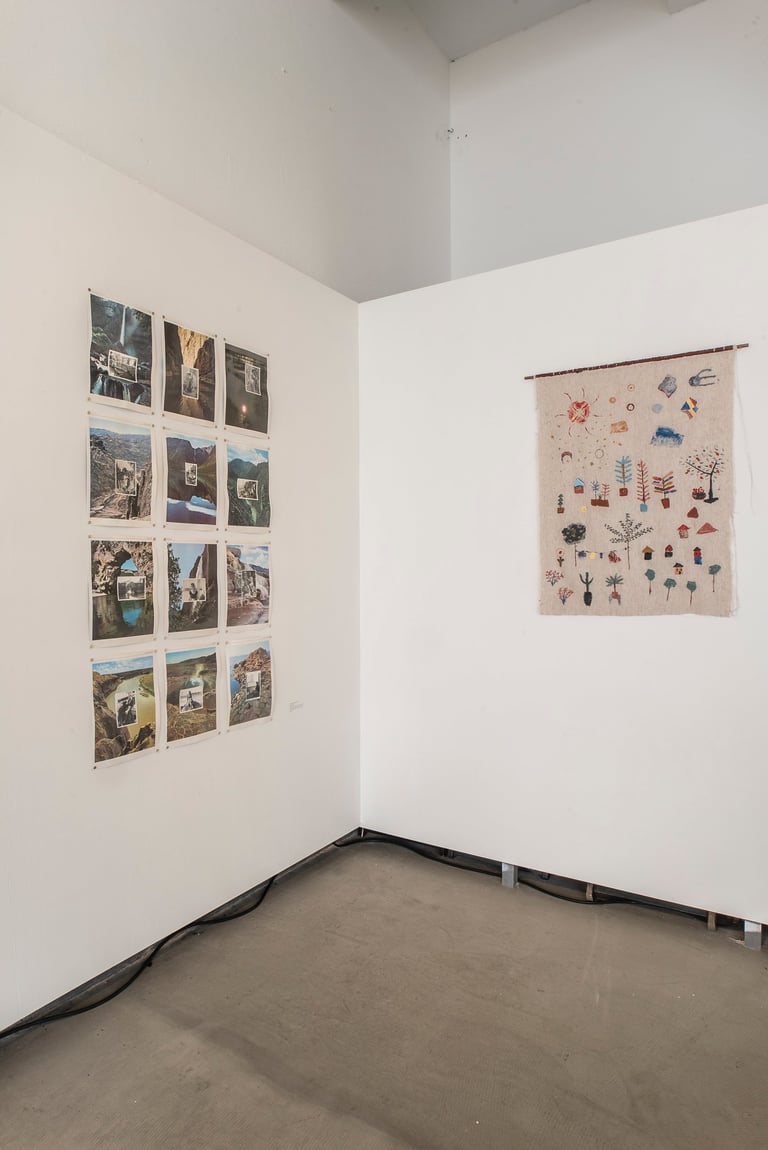

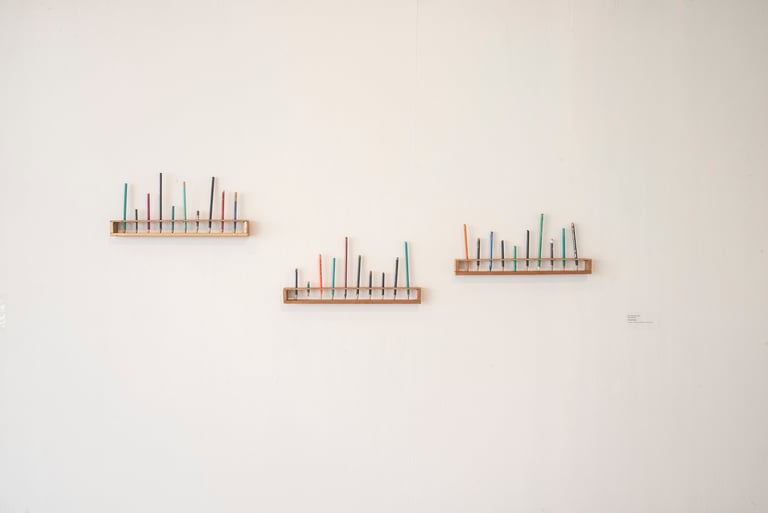

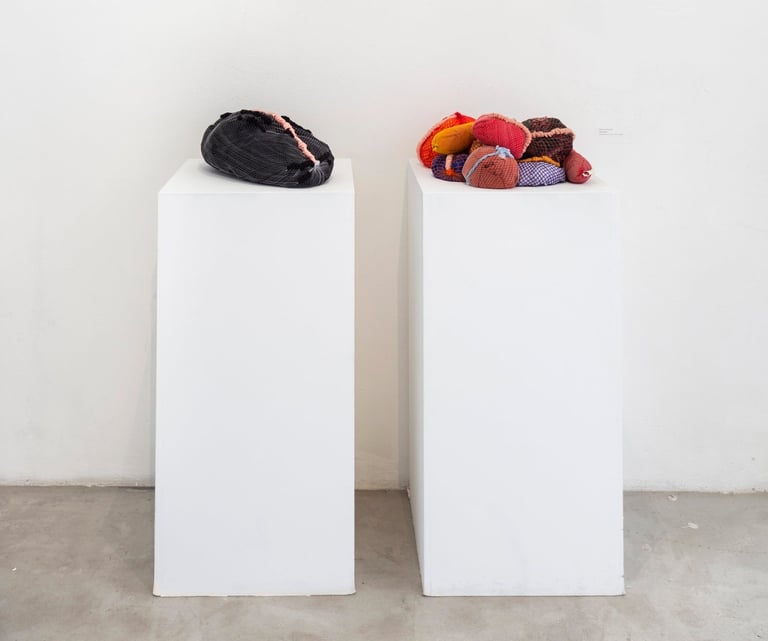

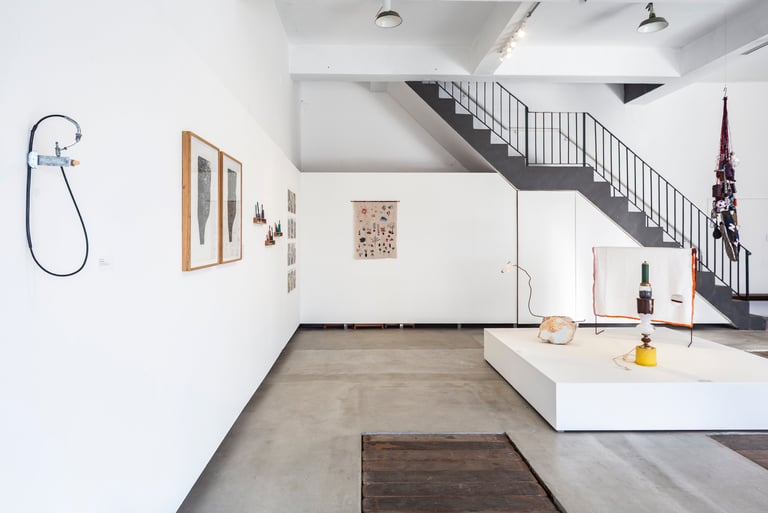

Créditos: fotos 1-6, 8 e 9 - Paulo Pereira
fotos 7 e 10 - Leka Mendes
ESTUDOS PARA UMA CASA NA ÁRVORE /EXPOSIÇÃO
A exposição Estudos para uma casa na árvore resultou da residência artística realizada durante o mês de Janeiro de 2025 por Clarice Cunha (São Paulo, 1985) e Manuela Costa Lima (São Paulo, 1983) no lapa, Lapa. Nas suas práticas, ambas fazem do tecido urbano a fonte para as suas instalações, sendo o caminhar, a escuta do lugar e a coleta pontos em comum para investigarem outras relações possíveis com a cidade. As artistas, formadas em arquitetura e urbanismo, apresentaram na exposição quatro instalações de mediano e grande porte desenvolvidas com materiais recolhidos nas imediações do espaço expositivo.
Os trabalhos refletem os encontros que Clarice Cunha e Manuela Costa Lima tiveram durante os seus passeios pelas zonas residenciais do bairro, assim como as visitas a lugares icônicos como o Mercadão da Lapa, passando pelas mais recentes demolições de casas e por estabelecimentos de comércio local onde convivem o artesanato e o altamente processado. Enquanto Costa Lima trabalha maioritariamente com fragmentos de mobília de madeira encontrados nas ruas, Cunha reúne elementos diversos de uso cotidiano adquiridos no comércio local. Assim, num ambiente fantástico de passarinhos de madeira feitos e pintados a mão, suportes para plantas de metal e de plástico, portas, gavetas, feijões, elásticos de cabelo, borboletas dissecadas, pedras e pedrinhas para aquários, partes de armário, ganchos para cortina de chuveiro, dobradiças, banquinhos, sacolas de crochê e balas de todas as cores e sabores, resulta uma ecologia sensível, um tanto precária e não menos delirante, carregada de história e significados. Assim, deparámo-nos com a substância de um lugar através do encontro minucioso com a sua materialidade e os afetos que esta evoca.
A exposição teve lugar no lapa, Lapa entre os dias 31 de Janeiro e 21 de Fevereiro de 2025.
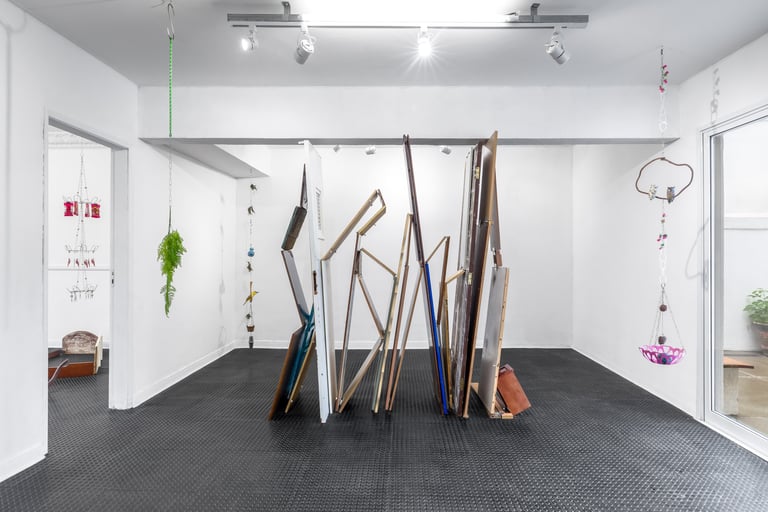

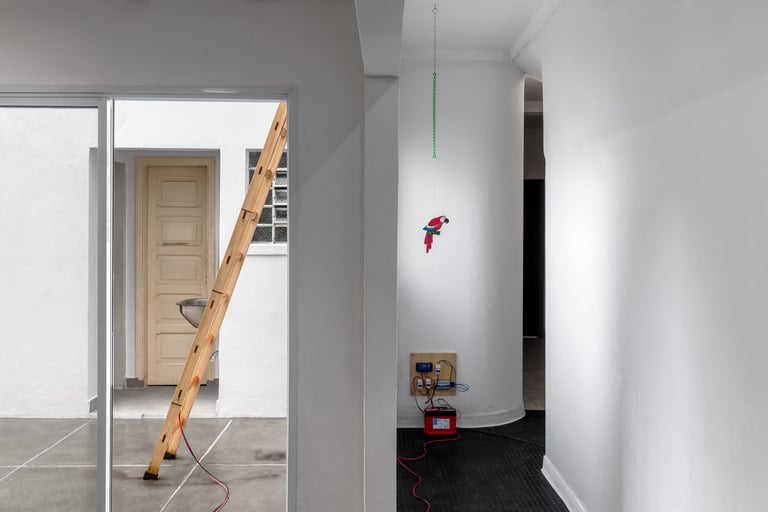

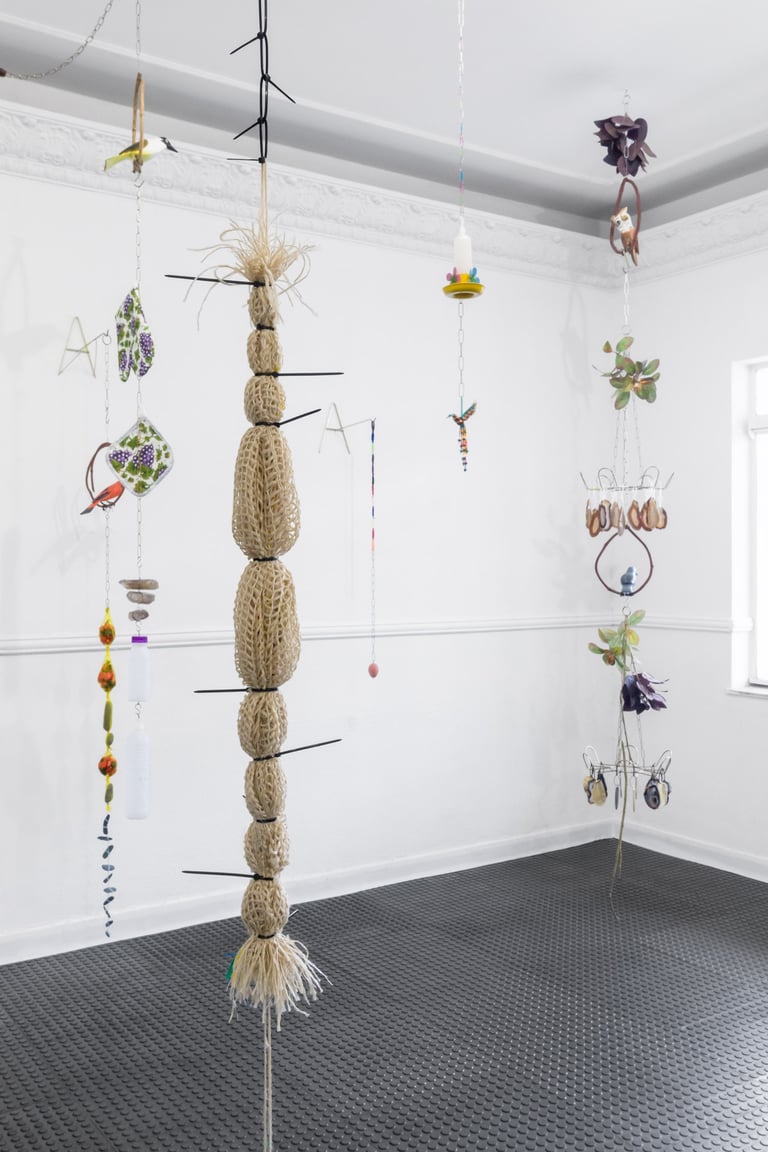

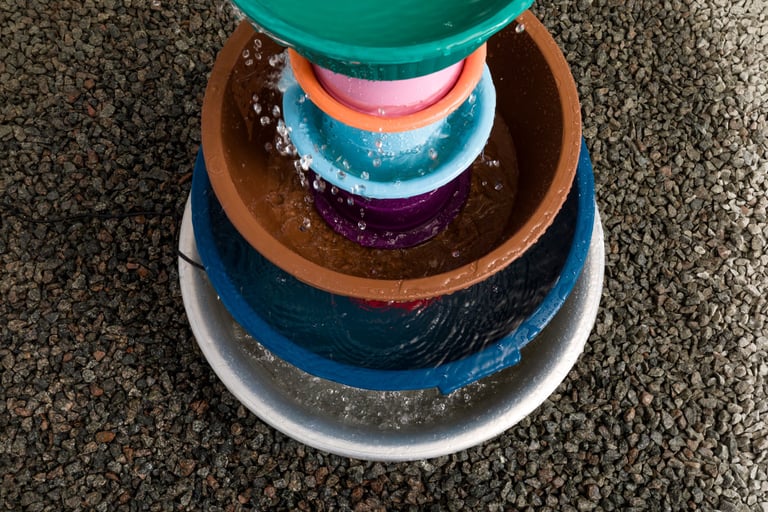

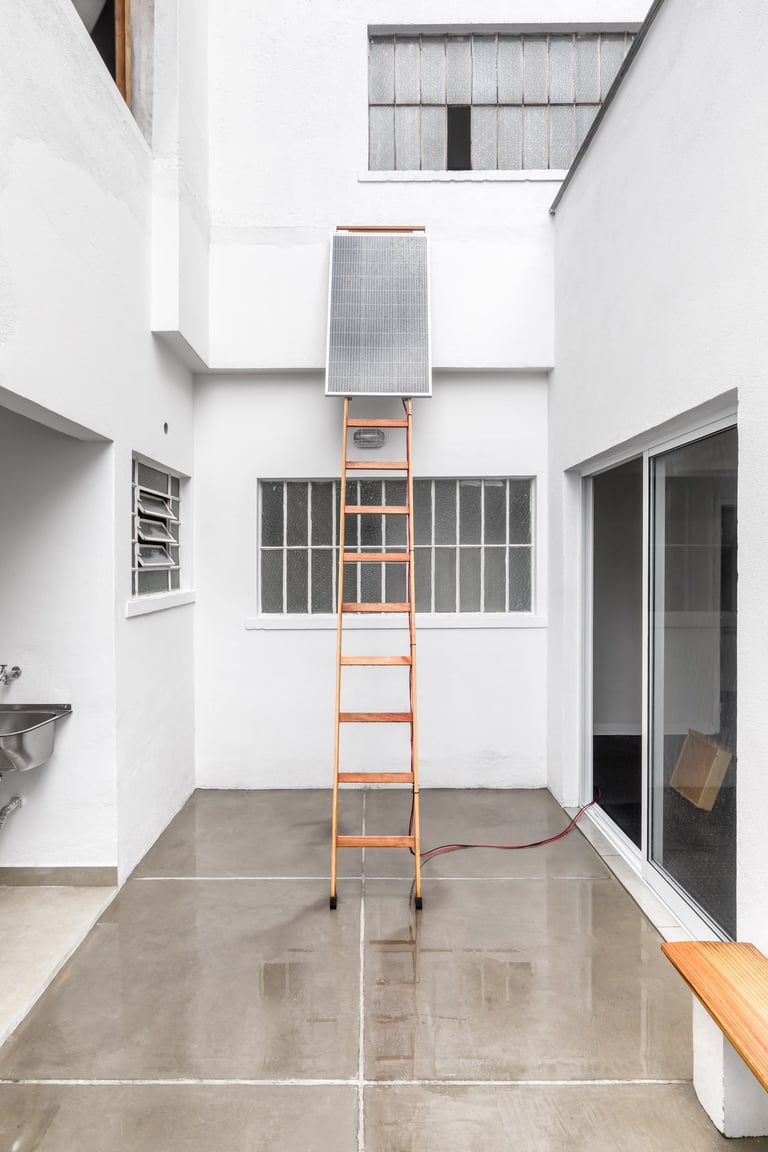

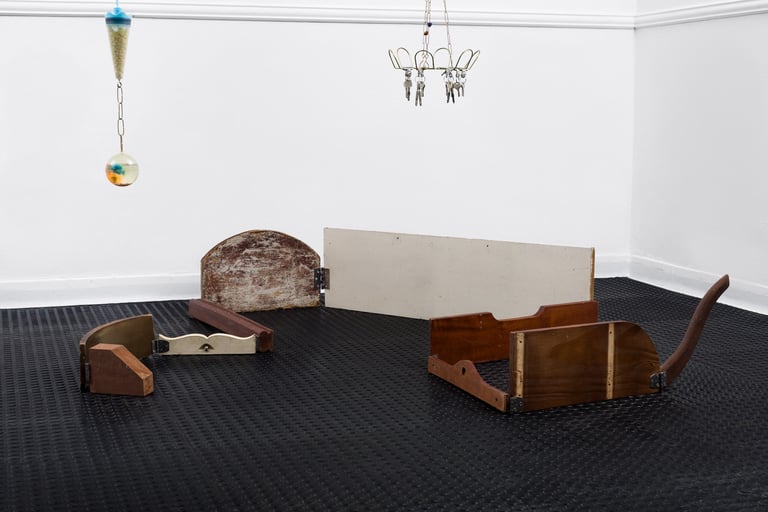

Créditos: Estudioemobra
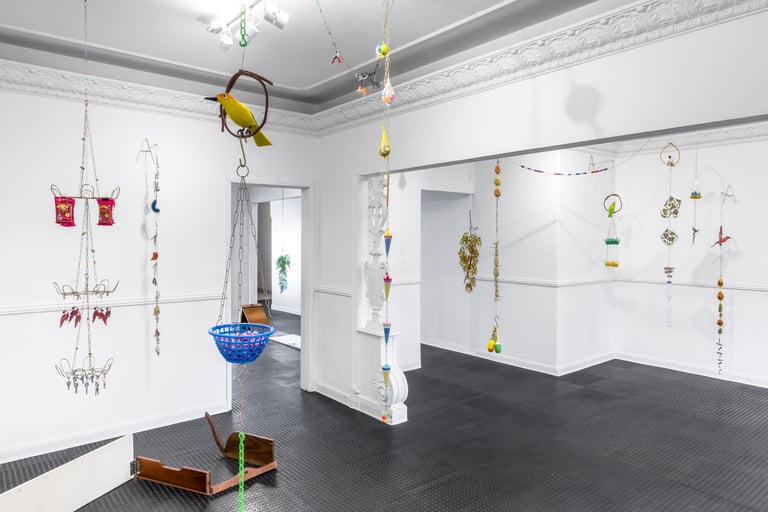

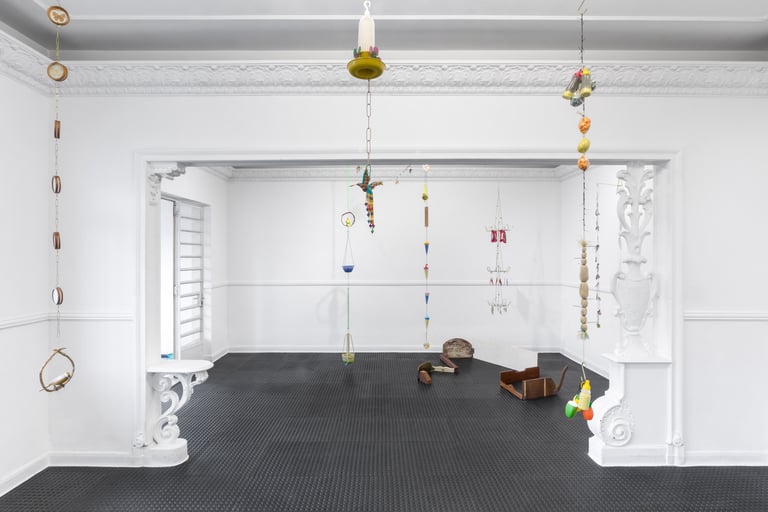

UMFANEKISO UYOPHA INKUNGU . AN IMAGE OOZES MIST /EXHIBITION
An Image Oozes Mist brought together Phumulani Ntuli's most recent big-scale mixed-media collages on canvas, a series of works on paper produced during 2023 with artist Kim-Lee Loggenberg through a collaboration with the David Krut Workshop, and his latest stop-motion animation films. The convergence of these multiple techniques—from developing his own mixed-media collage language to printing with a traditional, manually operated etching press and working within the digital realm of artificial intelligence—is characteristic for Ntuli's versatile practice. Continuing his longstanding enquiry into processes of image-making and consumption, more recently the artist has been reflecting on the front end and back end of coding—the front end being the resulting image (what we see on our screens) and the back end the code (which is normally inaccessible or unreadable to most of us). Hence, An Image Oozes Mist is about an image covered in mystery; an image which isn't accessible to the onlooker in its full complexity.
It is through a close engagement with visual material and the history of the media in South Africa that Ntuli's work provides an elaborate reading of the country's socio-political past and present. His settings typically isolate and reconfigure pieces of archival images of key social, political and cultural events and figures from the country's history. Trespassing the limitations of linear time and geographical proximity, this approach allows the artist to suggest connections between events and figures that might at first seem to be detached from each other, calling attention to the effects of the decontextualisation of an image while creating a hiatus in constituted narratives.
The exhibition took place at UJ Art Gallery from October 12 until November 15, 2024.
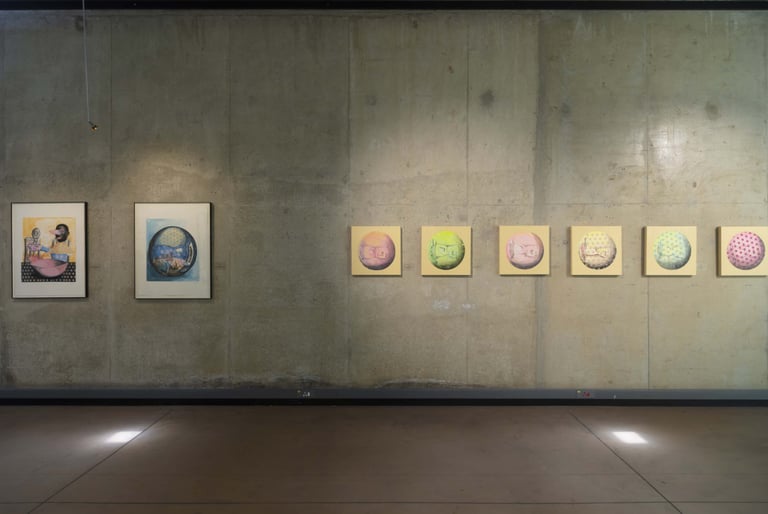

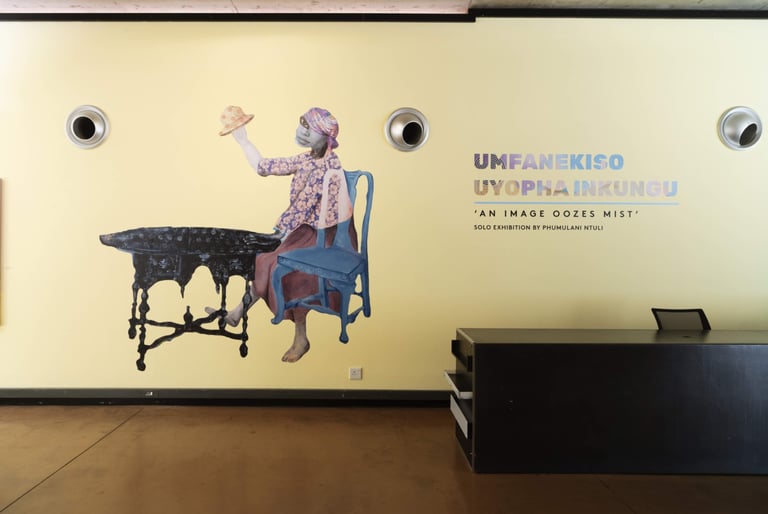

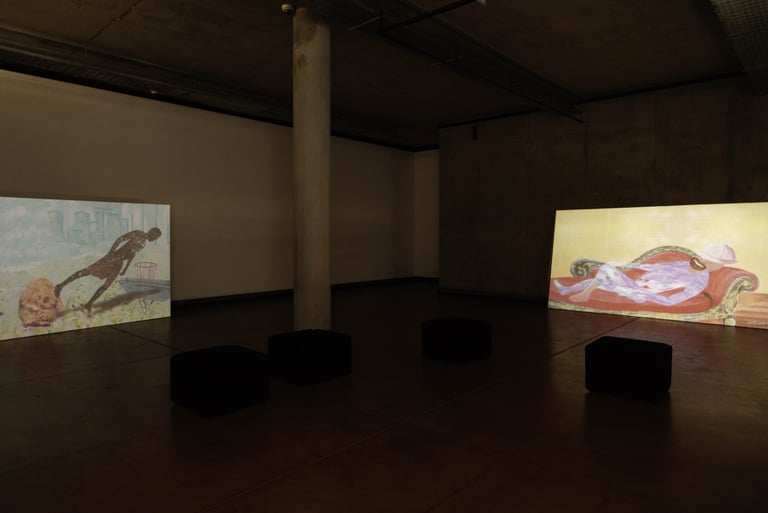

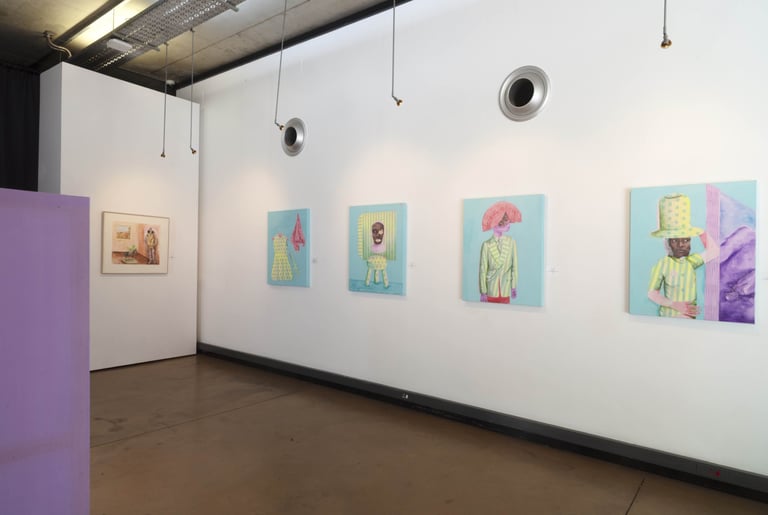

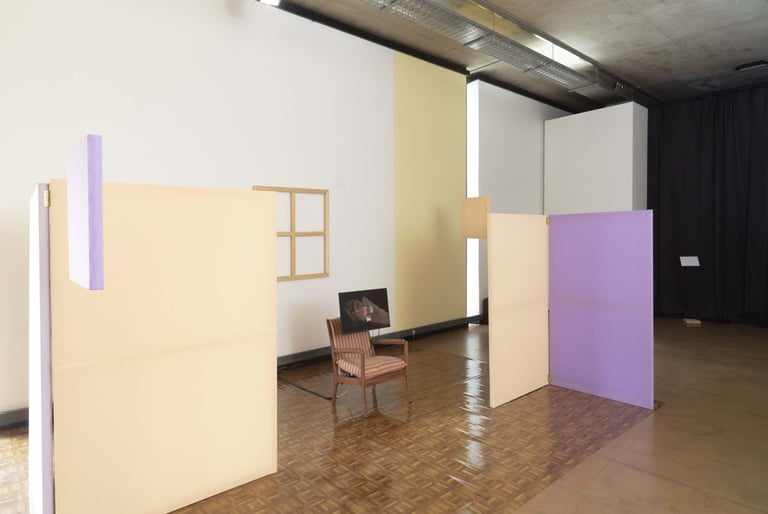

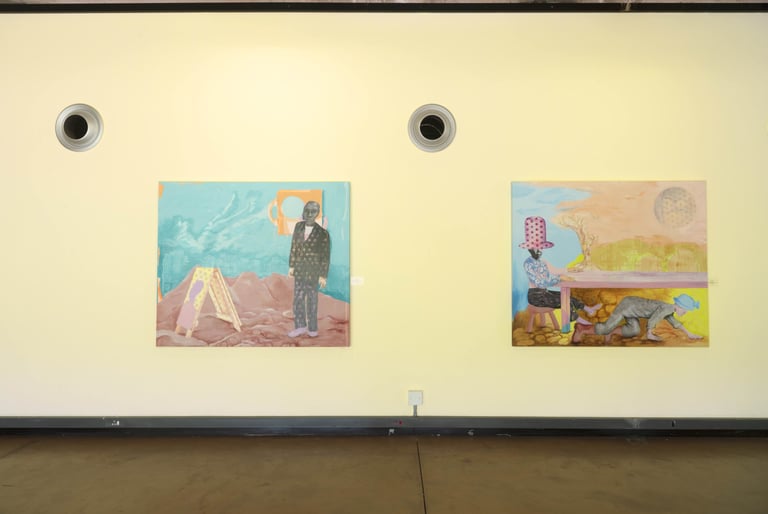

Credits: Thys Dullart
Images courtesy of UJ Arts and Culture
UM LUGAR ONDE POUSAR /EXPOSIÇÃO
A partir de sutis exercícios de imaginação, a primeira exposição individual de Juliana Maia em São Paulo, intitulada Um lugar onde pousar, convida a uma revisitação crítica do espaço doméstico. Negligenciado pela arquitetura ao longo dos últimos cento e cinquenta anos da História, o filósofo italiano Emanuele Coccia, que em 2021 publicou o livro Filosofia da casa, defende que, entre outras coisas, “é no lar e por meio dele [...] que a desigualdade entre os sexos foi gerada, afirmada e justificada” (Coccia, 2021). É a partir desta reflexão, que o autor enfatiza que existe, nos nossos dias, uma urgência—não só política, mas moral—em revisitarmos as complexidades deste espaço. Nesta exposição Juliana Maia, que há mais de dez anos segue esta linha de investigação, parte de objetos tipicamente associados à casa, como almofadas, cortinas, bolsas e vasos—o que carrega, o que alivia, o que acolhe – procurando um engajamento com a memória e a História no feminino.
A exposição teve lugar no lapa, Lapa entre os dias 27 de Setembro e 18 de Outubro de 2024.
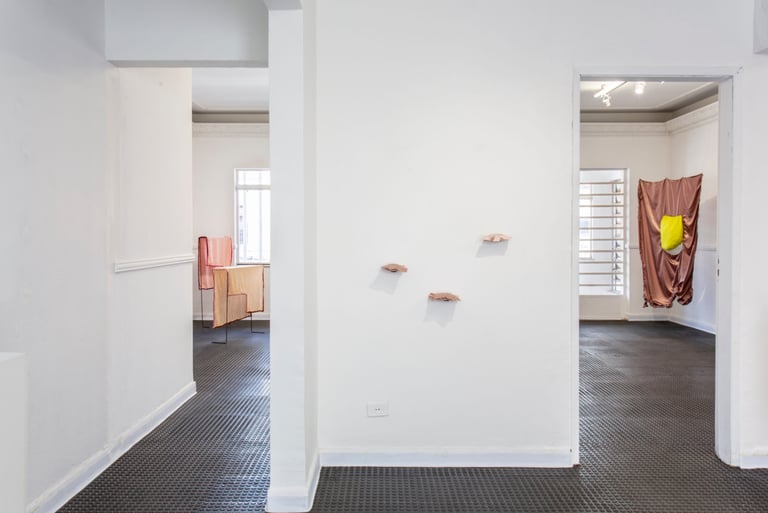

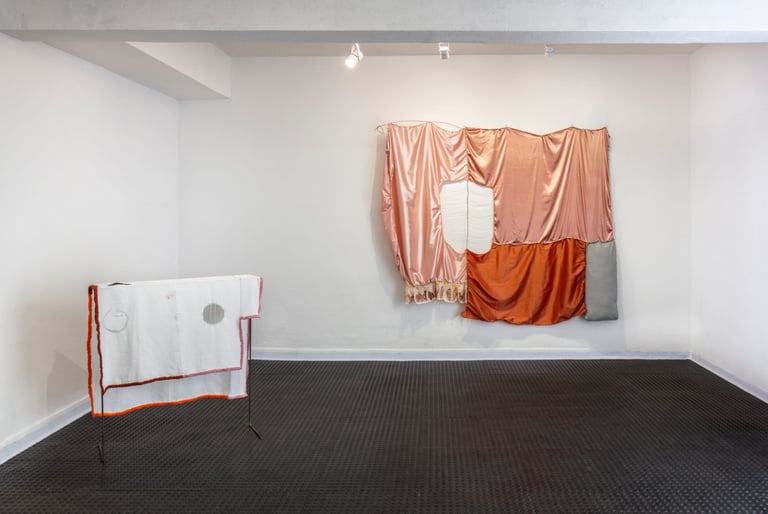

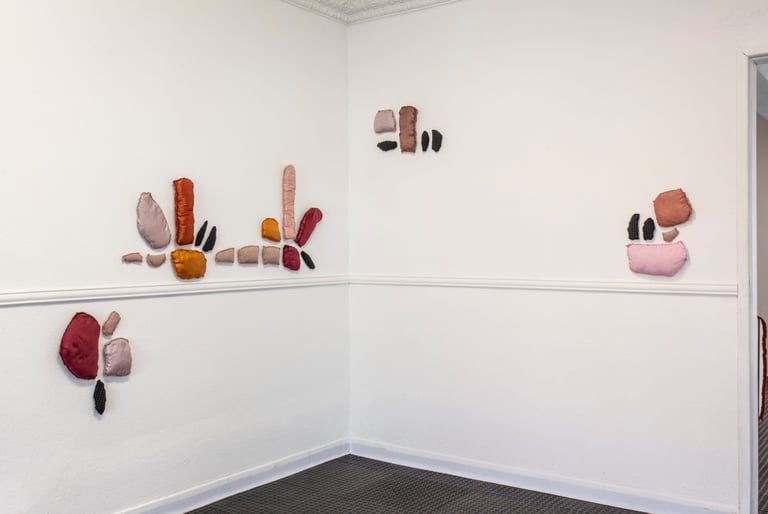

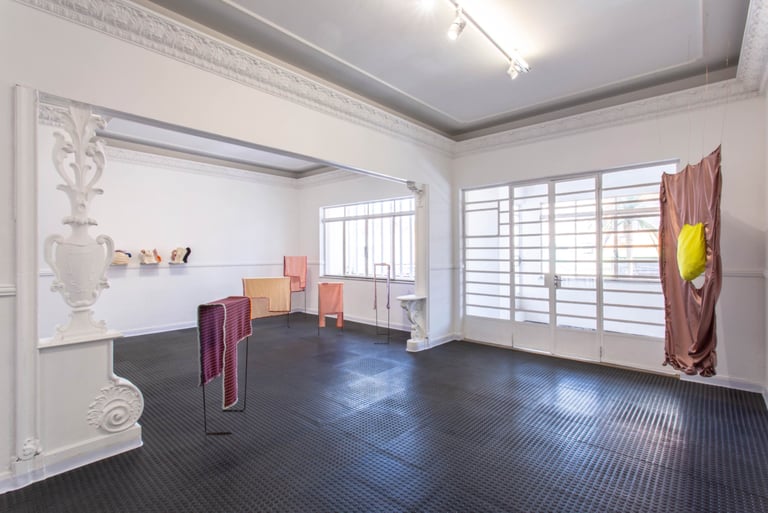

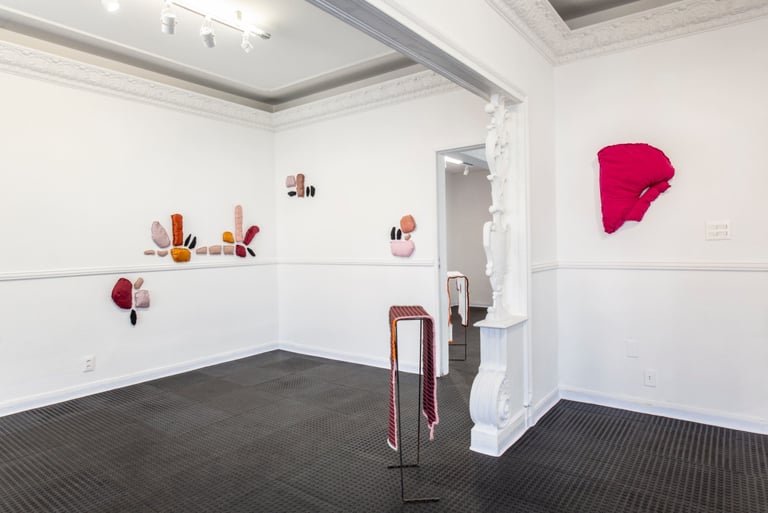

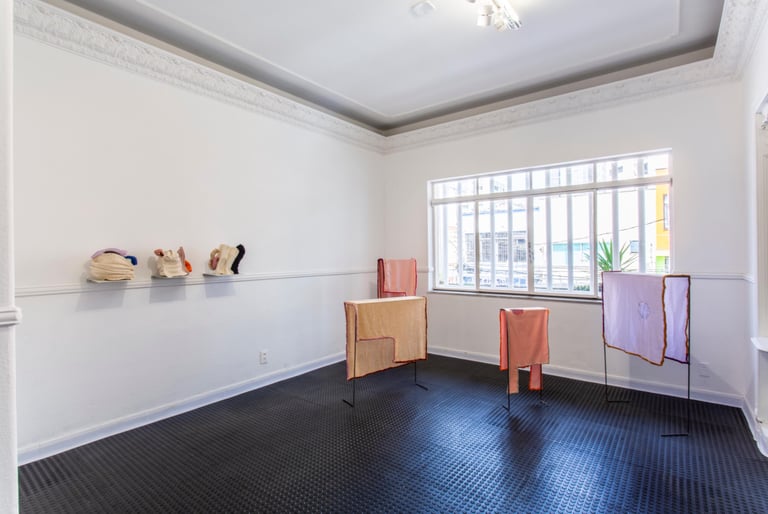

Créditos: Paulo Pereira
THE SKIN OF THE EARTH /EXHIBITION
Natália Loyola's first solo exhibition at Coletivo Amarelo in Lisbon presented three new installations in which the artist explores the development and constitution of the elements that make up what she calls 'the skin of the earth'. Following Robert Smithson's assertion that "the city gives the illusion that earth does not exist" (Smithson, 1968), the exhibition offers a space to critically reflect on the way we consume and construct different narratives about the earth. Of interest for a close engagement with the exhibition is the concept of geontopower as proposed by anthropologist and critical theorist Elizabeth A. Povinelli. Geontopower refers to the power of and over Nonlife beings, or, in other words, the power to decide over the value attributed to the living (biology) and the inert (geology). In this context, Povinelli speaks about the "distributed nature of enfleshment"—about how it is based on epidermal boundaries that we develop a perception of hierarchical separation from other forms of existence (especially from Nonlife). But what happens when we think of what we are used to conceiving as Nonlife as protected by a skin? Not without problematising the fact that our capacity for empathy seems to be restricted to what we recognise as similar to us, Loyola's multi-media installations are an exercise in coming closer to the inert—both in terms of an epidermal imaginary and its possible sensuous and ethical repercussions.
The exhibition included a public programme in which other artists were invited to enter into a conversation with Natália's practice and the issues that come up within her works through their own artistic proposals: Julián D’Angiolillo, Maura Grimaldi, Nico Espinoza and Victor Gonçalves. For the screening of Julián D'Angiolillo's film "Ongoing Cave" (2023) we were hosted by the Geological Museum in Lisbon through a kind partnership with LNEG (Laboratório Nacional de Energia e Geologia).
A short documentary about the exhibition is available here.
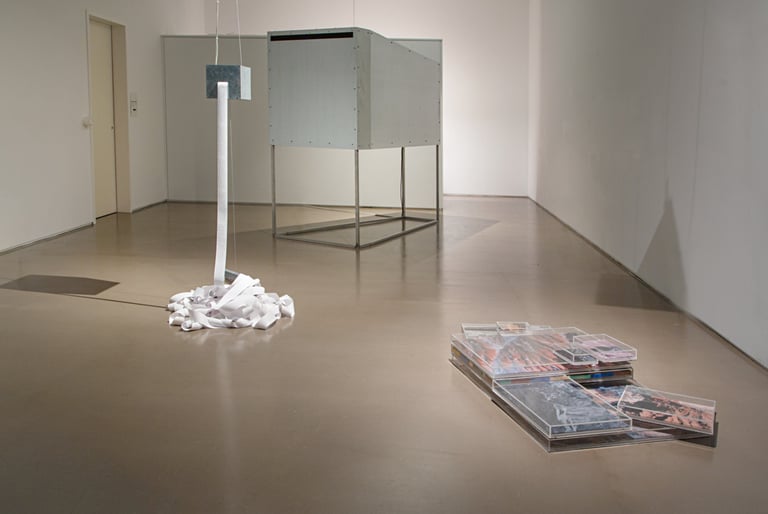

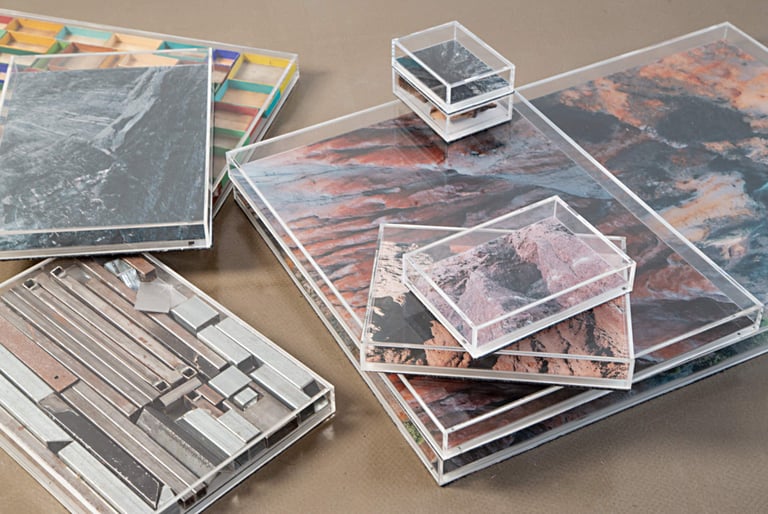

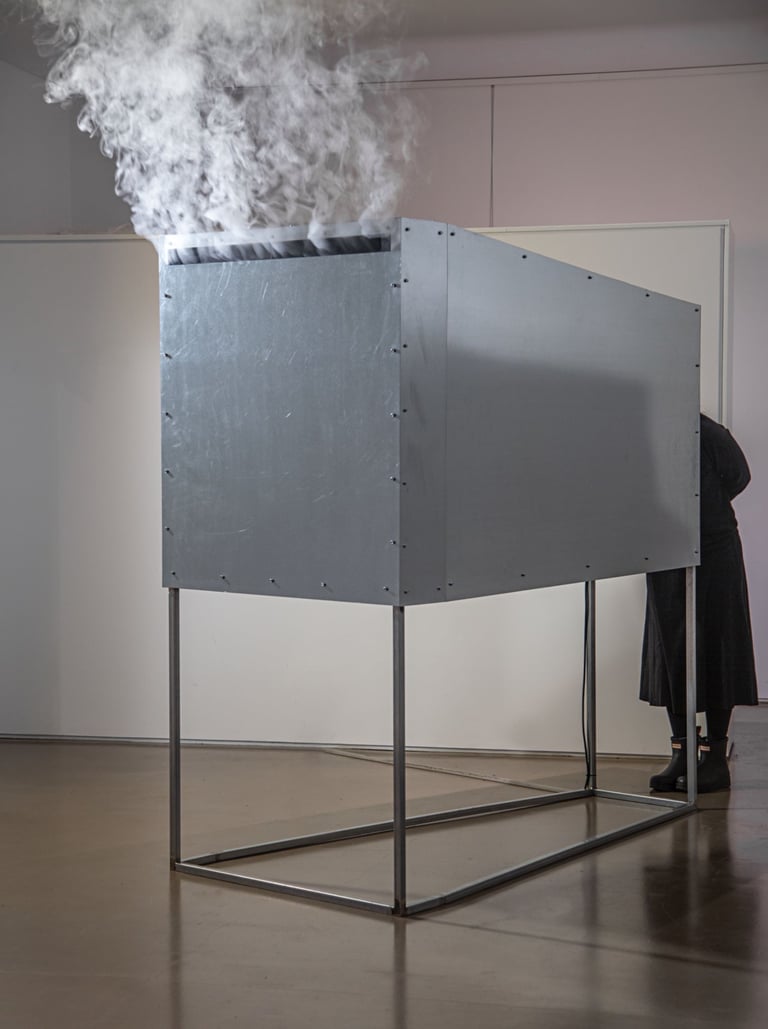

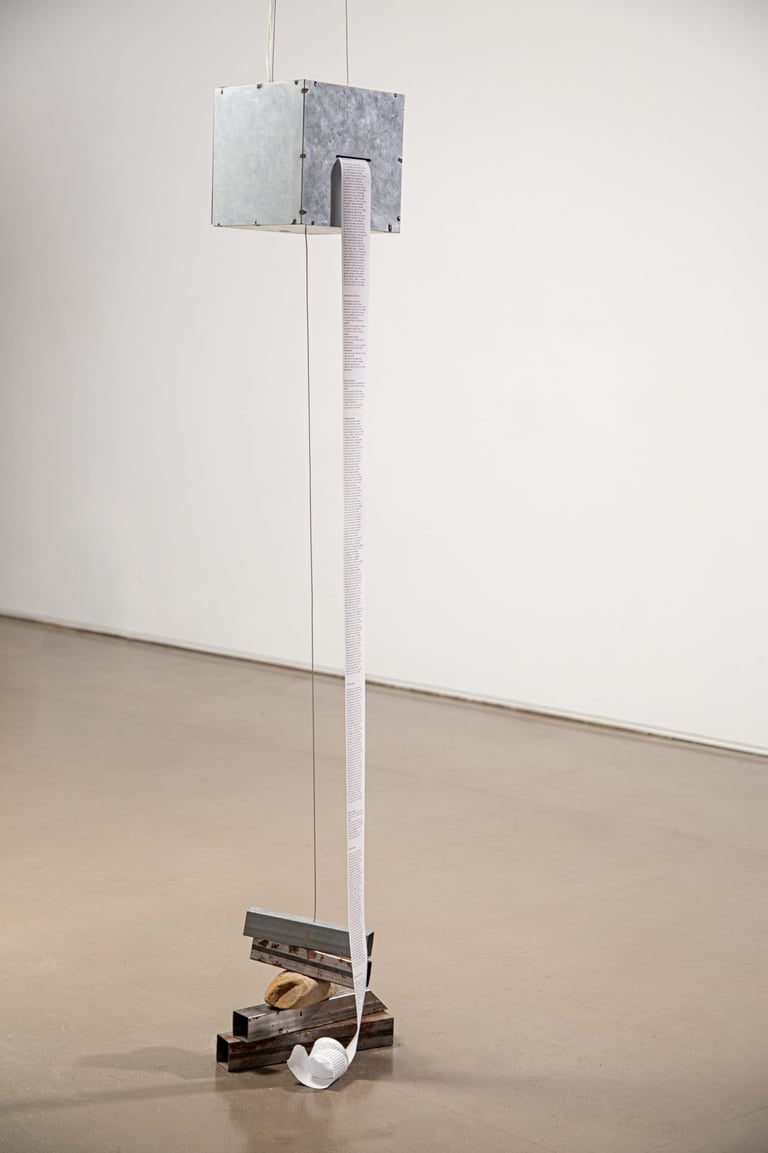

Credits: Francisco Baccaro
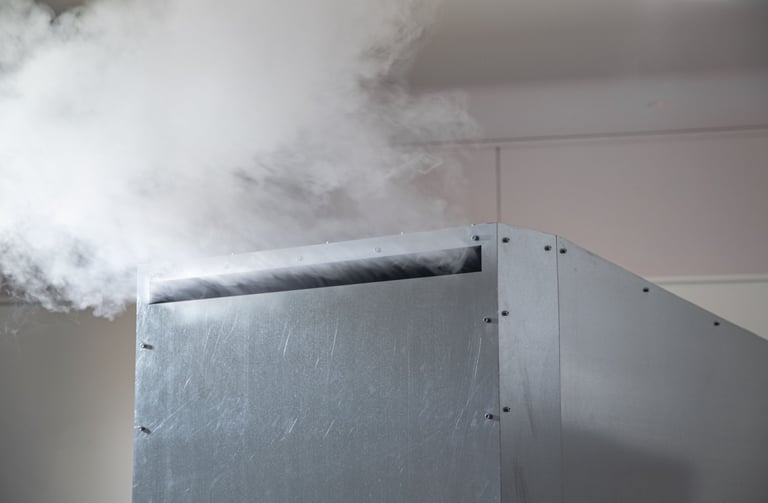

MANY HANDS MAKE LIGHT WORK /ARTISTS GATHERINGS AT THE BAG FACTORY
A project conceptualised during my TURN2 curatorial residency at the Bag Factory Artist's Studios in Johannesburg, South Africa, February/March 2022
with Wezile Harmans, Sandile Radebe, Kutlwano Monyai and Joe Legate, the four invited hosts for the proposed collective maintenance sessions and alongside the larger community of resident or visiting artists and curators between April and July, 2022
Many Hands Make Light Work was a platform for encounter that aimed to make visible and reflect on the conditions of possibility for art making in the context of the city of Johannesburg and through it, South Africa at large. The objective was to complicate the assumed dichotomy between production and maintenance, especially within the context of the arts and its present-day cultural funding policies. By inviting the community of resident artists to engage in collective reflection and action around topics of collective care and infrastructural maintenance, the idea was to highlight the present conditions of the organisation's recently acquired building and its communities' current needs in direct relation to the physical space they inhabit. Many Hands Make Light Work gives the artists the possibility—through the mobilisation of resources and the organisations' official acknowledgment of their time—to take care of the building in relation to their own needs. The main idea was then to stir conversations around two fundamental concerns: the need for funding aimed at infrastructural maintenance and the acts of everyday (affective) maintenance that hold a community of artists and a place like the Bag Factory together.
Throughout four meetings that included shared lunch, the community decided to invest in kitchen utensils, painting the roller shutter door of the main entrance to the building yellow to give better visibility to the space, purchasing a UPS for the artists' wifi as well as two wifi extenders for the connection to reach every studio, and planting a tree in honour of David Koloane - artist, curator and one of the founding members of the Bag Factory.
**
Upon invitation of Rosie Hermon, curator of the Triangle Network Forum, Candice Allison (former director of the Bag Factory), Joe Legate (artist and founder of LL Editions at the Bag Factory) and myself spoke about Many Hands Make Light Work. By asking "how can we get in programme funding when the walls of our institutions are crumbling?" we reflected on the project developed at the Bag Factory and the challenges that institutions, especially small ones, continue to face when it comes to securing funds for their running and maintenance costs. The recording of the online conversation can be accessed here.
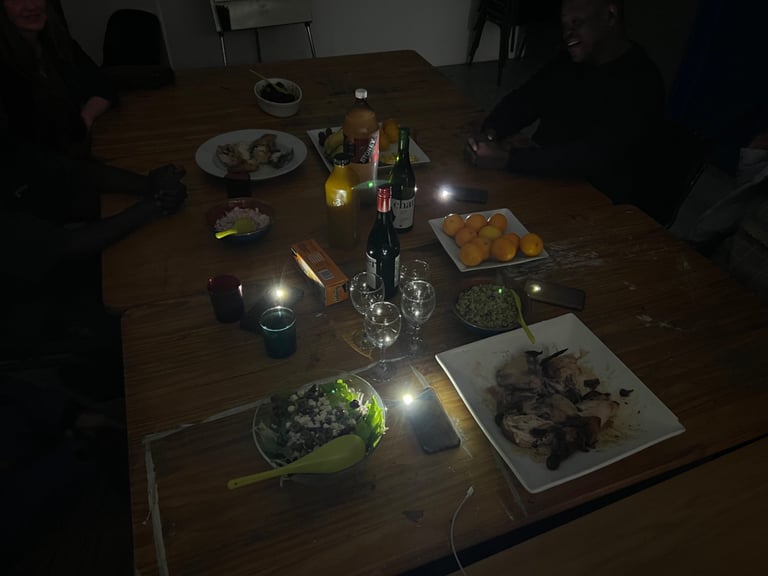

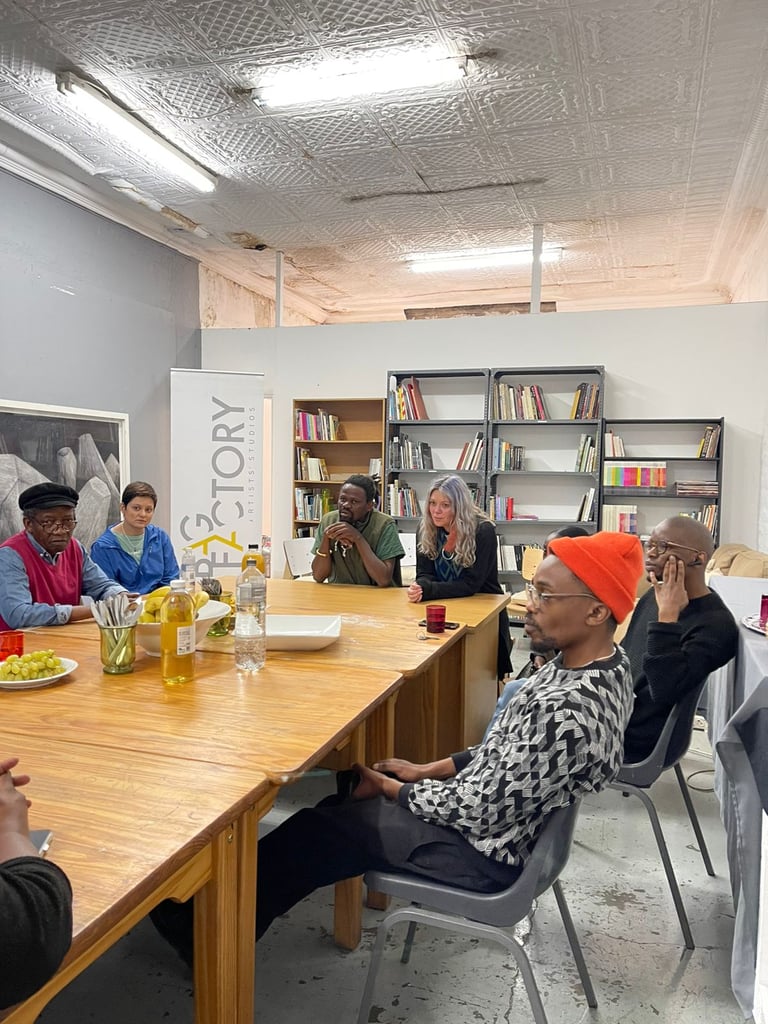

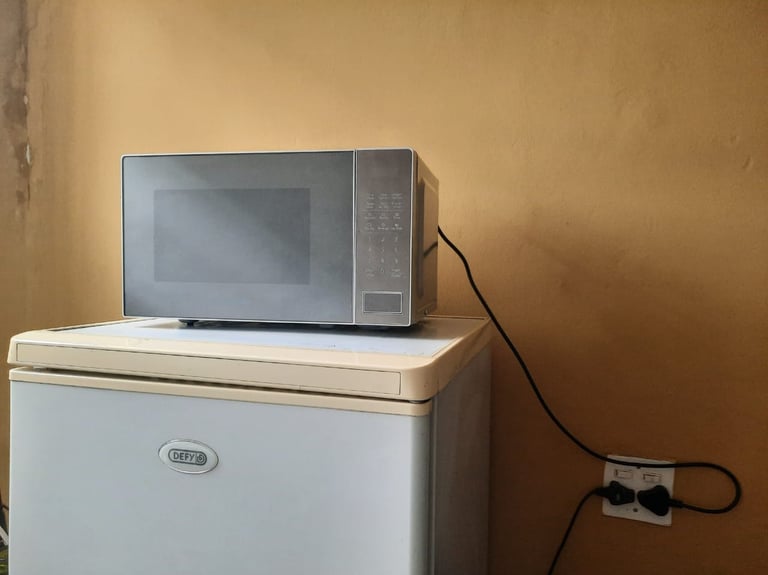

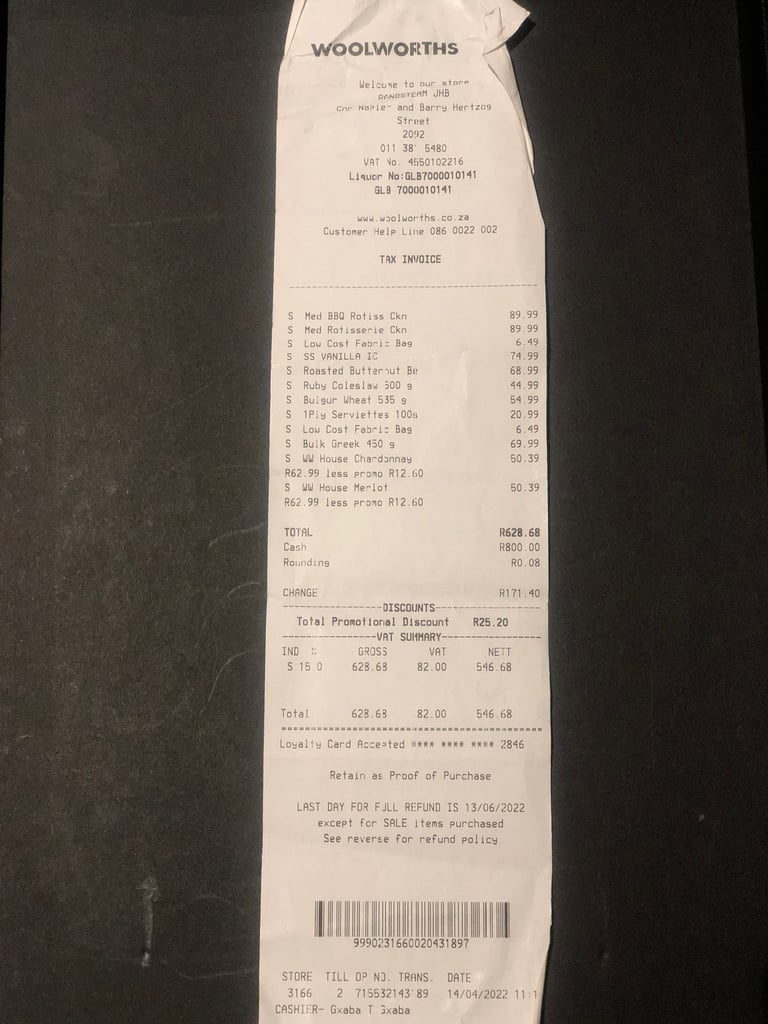

Credits: Wezile Harmans, Sandile Radebe, Zinhle Zwane, LUKE & GETVULNERABLE, Candice Allison, Kutlwano Monyai
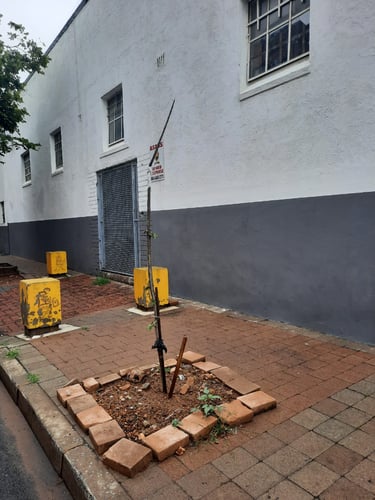

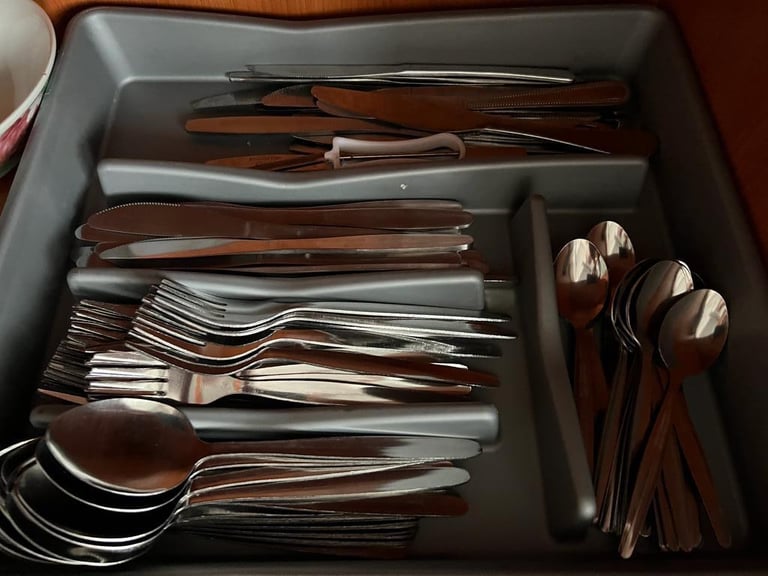

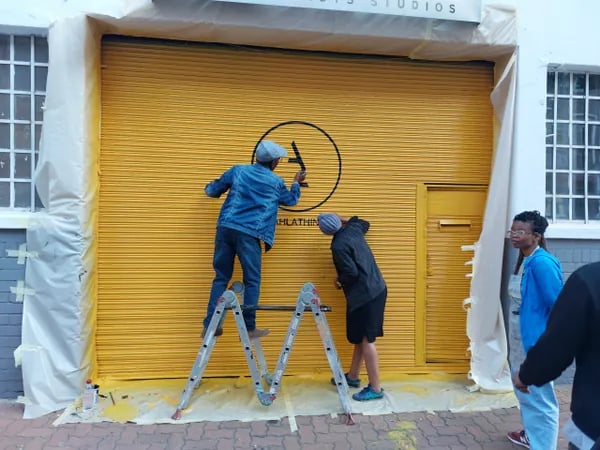

ATMOSPHERIC CONDITIONS /ONLINE EXHIBITION
Invited co-curator within the framework of the online exhibition 4+4 Proposals for Making Sense of Today's Convivial Cultures (2020) curated by Luísa Santos
For this exhibition conceptualised in the early days of the pandemic, the proposal was to work on a 5-day chapter online exhibition in collaboration with artist Jabulani Maseko. Jabulani recorded a series of videos from the sky throughout these first days of disruption which led us to think about the sky as a map to read our present earthly reality. By looking up we would get a better grasp of what was happening.
Throughout five days dedicated to the sky - the great immensity above us and the clouds in movement, we wanted to think about the possibility that lies in the air and the cyclic mixture of changing combinations of elements. Throughout the video series Atmospheric Conditions Jabulani Maseko inspects the phenomena of slow observation and non-expectation. Rather than reacting and communicating, these works are traces from an undemanding and concentrated practice of presence, from a state of listening and receiving. Visuals and soundscapes come together as settings that expand space and conjure unexpected relations inviting images from times past, present and yet to come. As in a series of photographs and installation drafts from Gerhard Richter's Atlas in which walls and windows become sky and clouds, so too do Jabulani's Atmospheric Conditions turn our attention from an apparently solid and confining interior towards the sky as an infinite projection space.
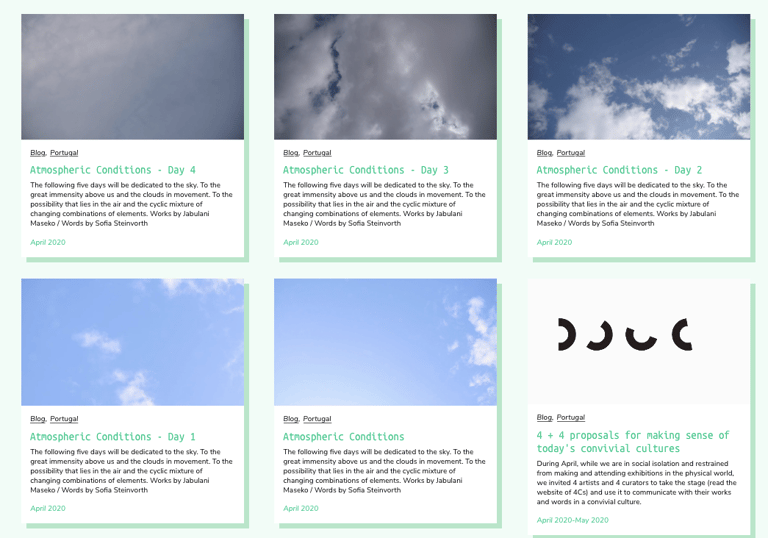

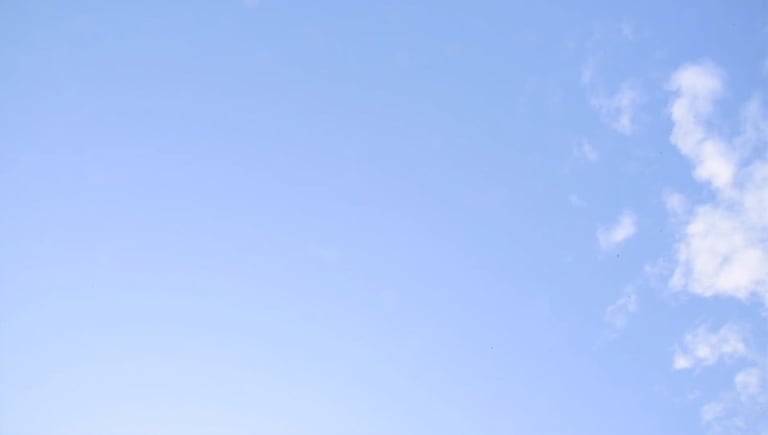

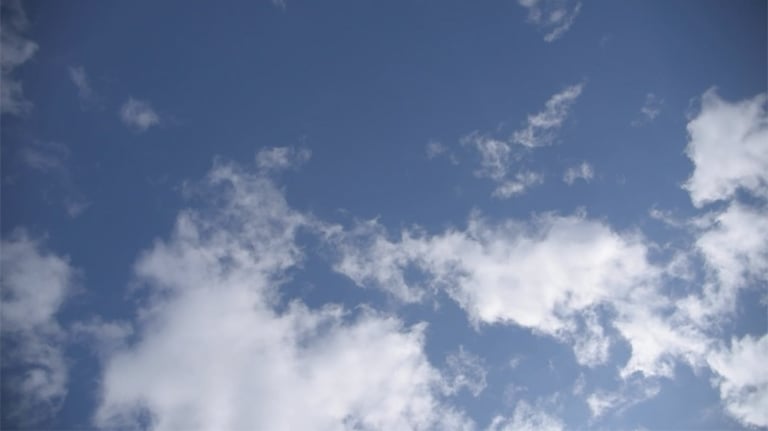

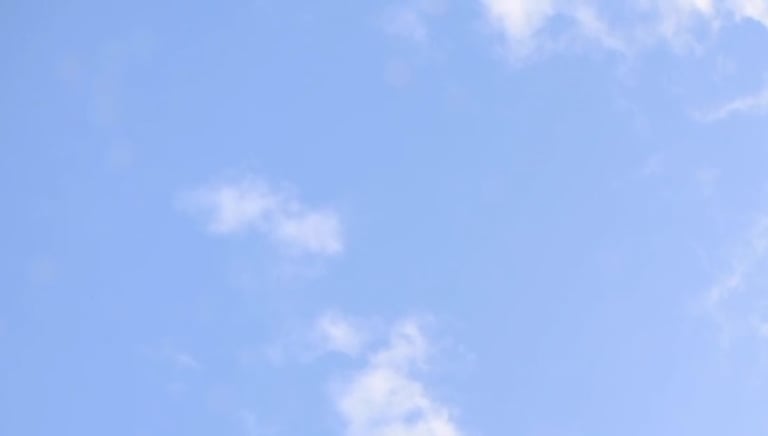

Image stills from Jabulani Maseko's Atmospheric Conditions (2020)
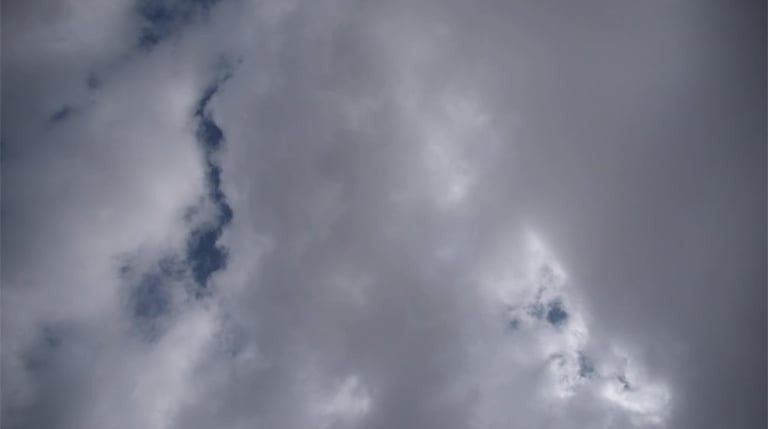

NOTES ON CURATING SOCIALLY ENGAGED ART /ONLINE PROGRAMME
Co-curator, CuratorLab final online programme, Konstfack
June 3 and 4, 2020
Over the course of the Covid-19 crisis, our frenzied world morphed into a global stagnation. The sweet fruits of connectivity, cheap travel, and breakneck production and consumption were put on hold overnight. In this turbulent time, we asked ourselves: what is indispensable for translocal solidarity and collective action? Which materials, ways of doing, and values can be prioritized over national or supranational apparatuses, and which strategies of curation, activation, and conservation can we craft as artists and curators?
Together with Judith Wielander and Matteo Lucchetti, the curators of the Visible Project, and the scholar Andrea Phillips, we looked back and from there forwards at advocacy as curatorial practice and at ways of advancing the discourse around curating socially engaged art.
From an Award to a Long-Term Support Structure?
Live conversation Matteo Lucchetti and Judith Wielander (Visible Project) with CuratorLab, Wednesday, June 3, 2020
What’s the role of art institutions? How to question their programs and methodologies by addressing socially engaged art practices? The conversation unpacks key questions specific to the art institutional and curatorial field and the possibility to create support structures that can think beyond extraction and move towards long-term engagement.
Recording of the conversation available here.
Democracy and Dramaturgy: Modern Justice and Socially Engaged Artistic Practices
Andrea Phillips, part of Konstfack common seminar in rethinking research practices in Art, Technology and Design, Thursday, June 4, 2020
What is an ‘award’ and can it be decided on the basis of social architectures that mimic Western democratic decision-making processes? Andrea Phillips reflects on her mediation of The Visible Award, where the decisions are made through a public jury in the form of a temporary parliament. This parliament proposes democracy as a purposive cascade of power; its architectural logic being not egalitarian but rather directional. Phillips will discuss the contradictions at the heart of democratic dramaturgies, with regard to the Visible Project, in which a radical translation of political cultural practice into the realm of contemporary art meets the tiers of judgement ascribed to the roles: nominee, advocate, speaker, jurors, and the people.
Recording of the conversation available here.
This programme took place in collaboration with the Visible Project (Cittadellarte-Fondazione Pistoletto/Fondazione Zegna), Public Art Agency Sweden, and the Italian Cultural Institute in Stockholm.
VISIBLE TEMPORARY PARLIAMENT 2019 /CURATORIAL ADVOCACY
Advocate for Tequiografías (2010-present)
by Daniel Godínez Nivón in collaboration with the AMI (Assembly of Indigenous Migrants)
Hôtel de Ville Paris, France, 2019
The Visible Temporary Parliament was a biennial award for socially engaged art which last took place in 2019. Being one of the curators of the 2019/20 CuratorLab cohort, I acted as a curatorial advocate for Tequiografías, the shortlisted project initiated by Daniel Godínez Nivón. The Parliament was an exercise in which to test curatorial advocacy as a form of care and responsibility defending artistic projects of artists such as Richard Bell, Cooking Sections, Luke Ching, Forensic Architecture, Daniel Godínez-Nivón, Trampoline House, Emily Jacir, Marisa Morán Jahn, Otobong Nkanga, Jasmeen Patheja. One of the main questions raised throughout the process was: how can art institutions and practices be reformatted beyond display towards agency and engagement?
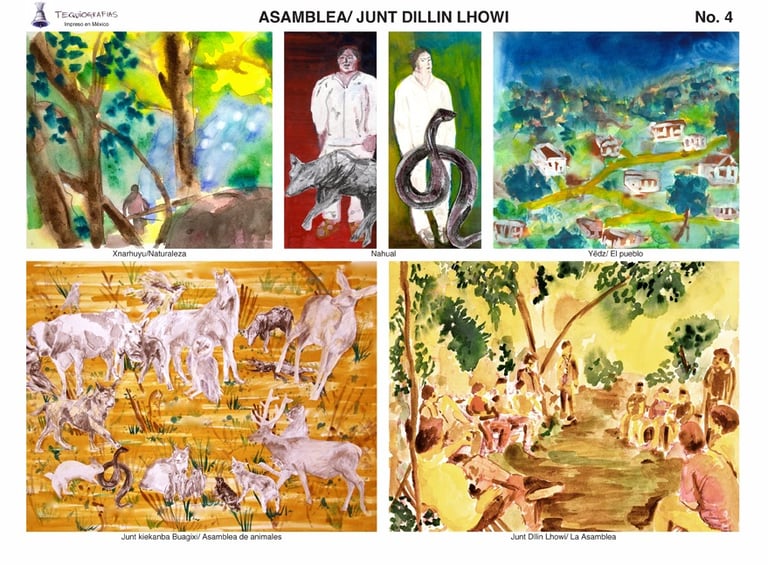

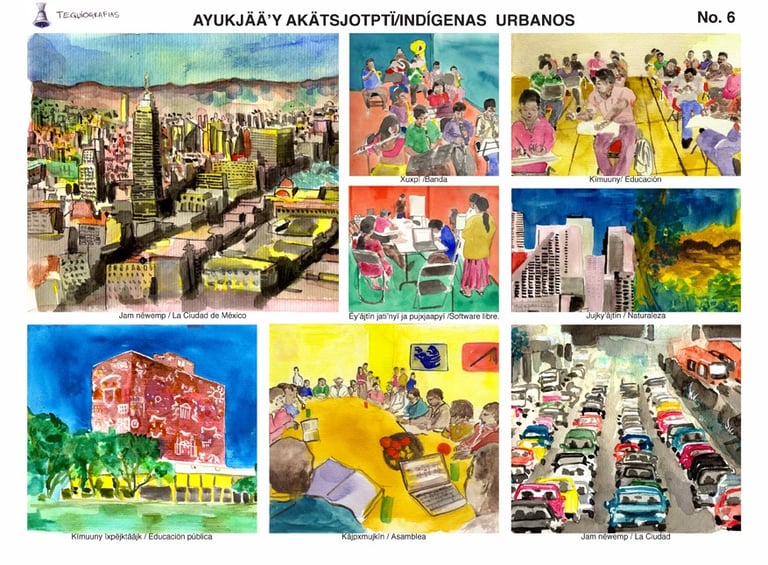

Tequiografías N. 4 and N. 6. Courtesy of the artist
THE NATURE OF THIS ROOM /EXHIBITION
with works by Rosanna Helena Bach and Nuno Moreira
As the anthropologist Edward T. Hall refers, practically everything that man is and does is related to the experience of space. The often-unconscious idea of a personal bubble of space, an invisible territory that we call our own, is one of the key pillars of modern society. This privatization of space exposes deep-lying notions of estrangement, which translate not only into our being in space, but into several other dualities such as: 'us' and 'them', subjective and objective, normal and strange, science and humanities, rationality and spirituality.
In the exhibition The Nature of this Room, the artists Rosanna Helena Bach (1990, Switzerland) and Nuno Moreira (1982, Portugal) challenge these assumptions of clear separation and pure rationality, tackling form and formlessness, order and chaos and the prima materia, as the primitive formless base of all matter. Parting from two site-specific installations and a series of photographic experiments, the gallery turns into an immersive experience, in which the space itself – its rooms, shapes, walls, columns and windows - becomes a part of the artists' pursuits. Their pieces seem to merge with the surrounding architecture and to expand into the space contained within it. The apparent borders between works and space, graspable object and aether, blur. The gallery reveals itself as a liminal realm, a transitory, in-between state characterized by indeterminacy, the potential for destabilization and the possibility for transformation.
The publication with the same name – The Nature of this Room – launched on the day of the exhibition opening, is made of an assemblage of images (mostly photographs and drawings) and text fragments showcasing a part of the process that led the artists into the present project. This combination gives insights into theoretical discussions, poetic excerpts, physical and alchemical concepts as well as fictional and individual reflections on some key ideas in relation to their works. While the publication stands on its own, it can well be read as a complement to the exhibition, which visitors are welcome to do during the visit to the gallery.
The exhibition took place at Lapso Galeria, Setúbal, Portugal.